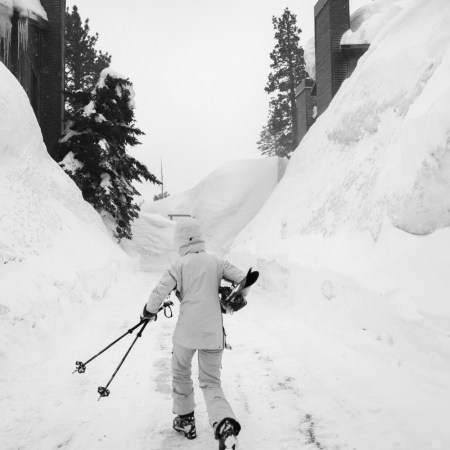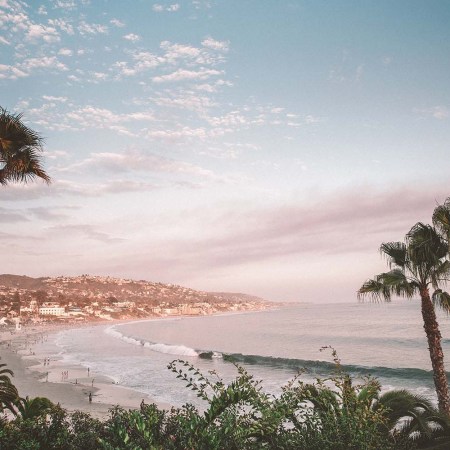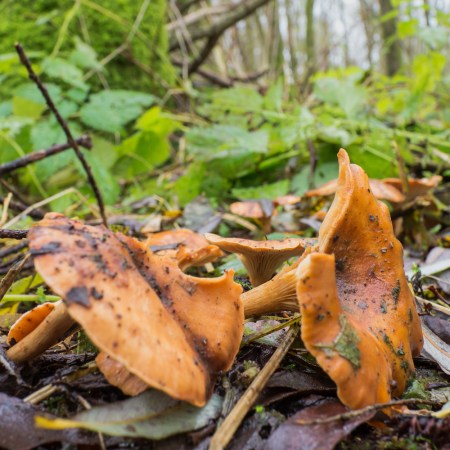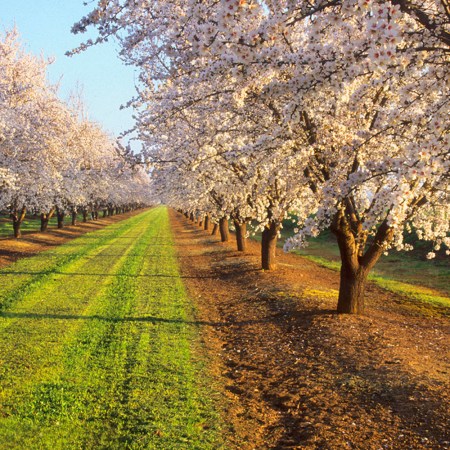California wildflower season might be that rare Instagram trend that’s actually worth the hype. Since the #superbloom earned its hashtag, the influx of newcomers has included — well, pretty much everyone. It can get crowded, but an hour or two frolicking in a colorful field full of beautiful flowers might be better than medicine. If it’s good enough for Tom Petty, it’s good enough for me.
While not every year yields a full-on super bloom, this renewed interest in flowers as a photo-op has put state parks back on the map as destination spots — at least for a few months every year. Whether you’re pure of heart or an influencer in the making, we don’t judge. Here’s a guide to everywhere you can see some seriously beautiful blooms in California this year, from Death Valley to Mount Diablo.
Chino Hills State Park
Best for: Poppies, Black Mustard (actually a yellow flower), violet owl clovers, Arroyo lupines, wild radish flowers
If you’re familiar with the general lay of the land in Los Angeles, then you know this is one of the closest spots to catch flowers in bloom, even if you live deep in the heart of the city. Just hop on the 10 East and drive 30 to 40 minutes (on a good day) until you hit San Bernardino County. Take the Soquel Canyon Pkwy and head to the park, which charges a very reasonable $10 for a day pass. Just make sure to watch out for rattlesnakes, keep all pets on paved areas, and don’t pick or trample the flowers. Get your Instagram moment from the safety of the trails, to preserve the beauty for everyone.
Death Valley National Park
Best for: Desert sunflower (“desert gold), desert marigold, white “gravel ghost,” purple phacelia, brittlebush, evening primrose, lupine, desert paintbrush, mariposa lily
If you couldn’t already tell from the name, this park is not for the faint of heart. It’s more of a trek from the LA area, but definitely worth it once you get through the three-and-a-half-hour journey. (It’s also worth noting that it’s only a cool two hours away from Vegas). Although this park won’t be experiencing a full-on super bloom this year, there are still plenty of wildflowers beginning to crop up in the area. Because the park is at such low elevation, even below sea level, the flowers start to grow as early as February here, and their contrast against the stark desert landscape and rocks is part of what makes this park such a destination.

Antelope Valley California Poppy Reserve
Best for: Poppies, lupine, keel fruits, fiddleheads, desert pincushion, California aster
If you’re looking for a tried and true place to catch a wave of California’s humble state flower, the poppy, this is your spot. The reserve is a part of the western Mojave Desert, but it’s a high desert, with elevation ranging from 2600 to 3000 feet. What does that mean? Drink plenty of water and watch out for high winds as you roam this poppy haven. As tempting as it might be, please don’t pick the poppies no matter how many of them are growing over these rolling hills.
Henry W. Coe State Park
Best for: Blue lupine, poppies, gold fields, baby blue eyes. Mariposa lilies, larkspur, wild hyacinth, Ithuriel’s spear, whispering bells
Switching gears to one of Northern California’s best-known parks, Henry W. Coe is actually the largest park in the region, preserving 87,000 acres within the Diablo Mountain Range. Just two hours south of the Bay down the 101, this park is just enough of a wilderness enclave to feel like you’re getting a break from the city. Boasting everything from historic ranches to hot springs, hiking, mountain biking and fishing, there’s something for everyone in this expansive natural retreat. As for the flowers, they’re actually most rampant earlier in the season, so April is the ideal time for a visit.
Anza Borrego State Park
Best for: Orcutt aster, beavertail cactus blossom, fishhook cactus, apricot mallow, desert woolstar
The largest park in the entire state at a whopping 600,000 acres, Anza Borrego is about an hour and a half northeast of San Diego. The rugged mountain landscape is beautiful and created by constant erosion, and the park is a big part of the Mojave and Colorado Deserts Biosphere Reserve, which was included in Unesco in 1984 due to the unique ecosystem.

Channel Islands National Park
Best for: Sunflower, milkweed, orchids, lilies, amaranth, Indian paintbrush, yellow coreopsis, poppies, lupine
Though it’s a very quick drive up from the Los Angeles area to get to the Channel Islands, it might take a bit longer to get down to Ventura from the Bay. Still, the drive is only half the journey: Once you reach the visitors center in Ventura, you’ll have to take one of the many Island Packer cruises to get over to each of the five islands, which are about 25 miles off the Santa Barbara coast. Another thing to keep in mind: Once you’re on the islands, there’s no transportation on the islands themselves outside of kayaking and private boats or walking.
Along with flowers, the islands support lots of rare and endangered plants, and each island has its own speciality. Santa Rosa is a great place to spot Indian paintbrush; Anacapa, Santa Barbara and Miguel all have yellow coreopsis (“golden showers”), and San Miguel is where you can find lupine and poppies. If you prefer something a little more civilized, there’s always the most well-known Chanel Island of them all: Catalina.

Mount Diablo State Park
Best for: Bear brush, manzanita, Chaparral currant, Indian warrior, buck brush, poppy, milk maids, black sage, blue dicks
Mount Diablo affords the kind of view that people travel miles to see, which makes it a pretty popular destination for hikers, horseback riders and campers alike. Established all the way back in 1851, the panoramic views from Diablo’s peak extend up to 200 miles on a clear day. The Summit Visitor Center is open from 10 a.m. to 4 p.m. daily, and vehicle entry fee is between $6 and $10, depending on which entrance.
For wildflower guidelines in particular, check out the park’s comprehensive guide that’s put together and updated by local volunteers right here.
Pinnacles National Park
Best for: Johnny-jump-ups, virgin’s bower, gilia, suncups, chia, black sage, pitcher sage, larkspur, and bush lupine
Two hours south of San Francisco and about 50 miles inland from Monterey, Pinnacles National Park is a relatively new park, only gaining status in 2013. But with unexpected activities like cave exploration, rock climbing and viewing of the endangered species of California condors, Pinnacle is quirky and surprising. As for blooms, they grow thickly in the rich, volcanic soil surrounding the dramatic rock faces, best seen within the 16,000+ acres of federally designated wilderness that’s located within the park. If you come between March and May, 80% of the plant life will be in bloom — so plan your trip soon.
This article was featured in the InsideHook LA newsletter. Sign up now for more from the Southland.






















